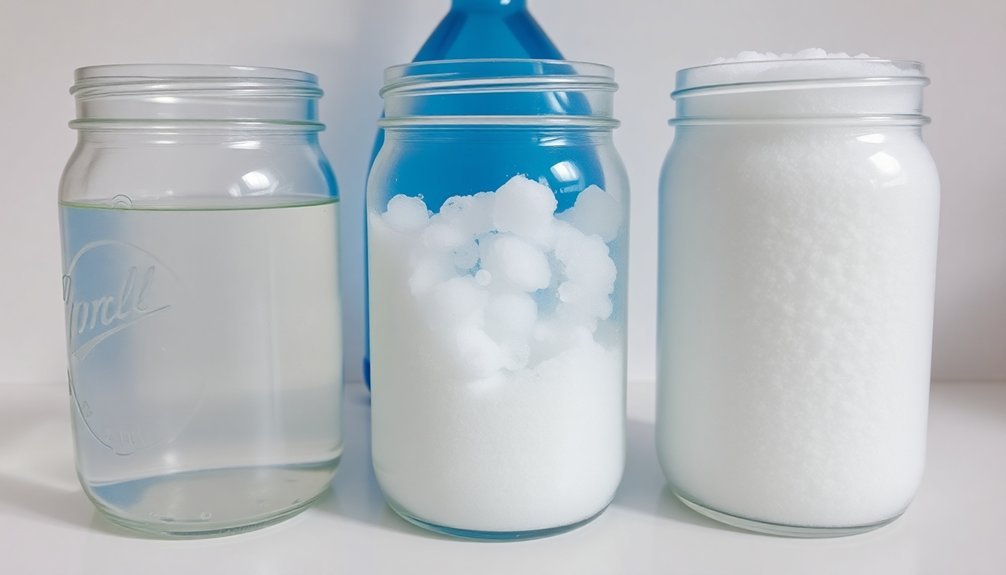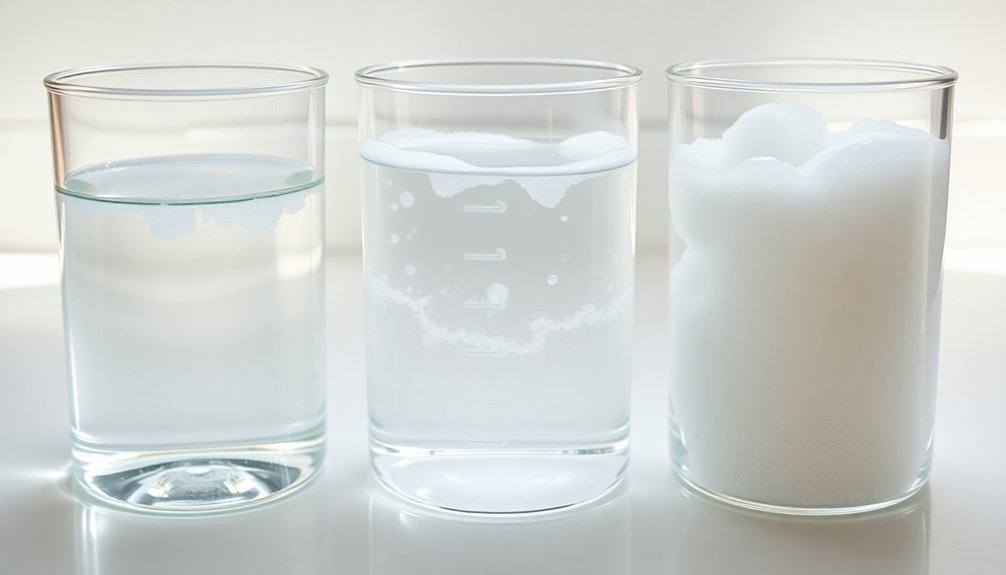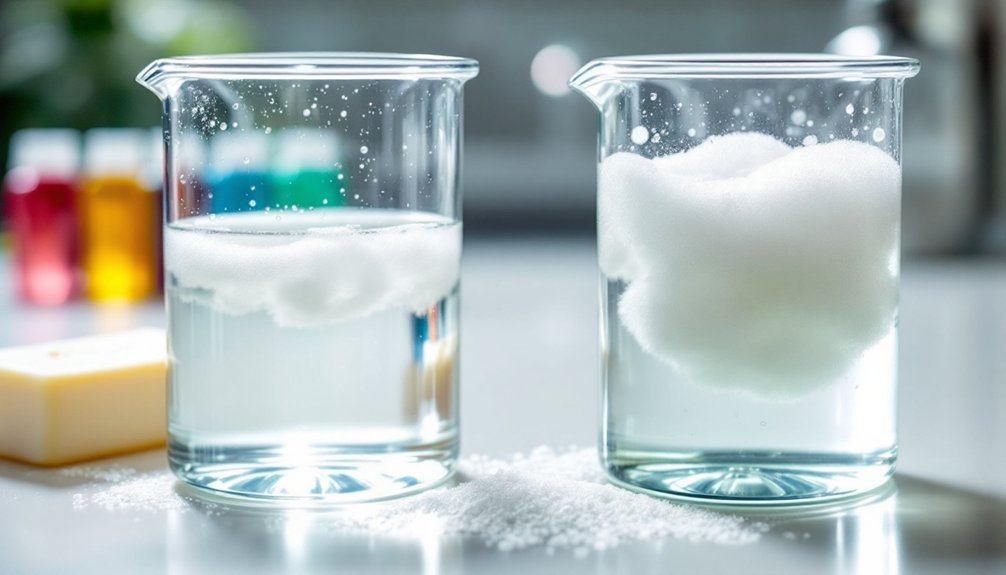You can quickly test your water quality with three simple soap methods: the soap bottle shake test (observe bubbles after shaking soap and water), test strip analysis (compare color changes to a hardness chart), and lather quality assessment (evaluate how easily soap creates bubbles). These tests reveal if minerals are affecting your soap's performance. Understanding your water's hardness level helps you adjust your cleaning methods and determine if water treatment solutions might be worthwhile.
The Soap Bottle Shake Test: Revealing Your Water's Mineral Content

While many homeowners remain unaware of their water's mineral composition, you can easily discover this essential information with a simple DIY test. The Soap Bottle Shake Test requires minimal supplies but delivers valuable insights about your water's hardness.
Start by filling a clear bottle one-third with tap water. Add a few drops of pure liquid soap, then shake vigorously for about 10 seconds.
Observe the results carefully. If you see cloudy water with minimal lather, you're likely dealing with hard water—minerals are interfering with the soap's ability to create bubbles. In contrast, soft water produces abundant, lasting bubbles and remains clear.
This quick test serves as your first assessment before pursuing more precise hardness measurements.
Test Strip Analysis: Measuring Hardness With Precision
After your initial soap bottle assessment, you'll want more specific data about your water's mineral content. Test strips provide a quick and reliable method for measuring water hardness with precision. Simply dip a strip into your tap water for a few seconds, then compare the color change to the provided chart.
| Hardness Level (gpg) | Water Quality | Impact on Soap |
|---|---|---|
| 0-3.5 | Soft | Easy lather, minimal soap needed |
| 3.5-7.0 | Moderately Hard | Reduced bubbles, more soap required |
| 7.0-10.5 | Hard | Difficult making lather, excessive soap needed |
| 10.5+ | Very Hard | Minimal bubbles, soap largely ineffective |
These affordable tests ($5-$10) deliver results in minutes, reporting in parts per million or grains per gallon. This precise measurement helps you understand exactly what's preventing your soap from working efficiently.
The Lather Quality Assessment: How Soap Performance Indicates Water Issues

Before investing in expensive water treatment solutions, you can conduct a simple lather test that reveals essential information about your water's mineral content.
Fill a clear bottle with tap water, add a few drops of pure liquid soap, and shake vigorously. Hard water produces minimal bubbles and a cloudy appearance, while soft water creates abundant, great lather.
Water hardness averaging 13 grains across the U.S. considerably impacts soap performance, with noticeable effects starting around 7 grains.
For precise measurement, water test strips change color when dipped in your tap, allowing comparison against a hardness chart.
To improve lathering in hard water conditions, try using a water mister for better hydration control.
This simple technique can enhance your soap's effectiveness without requiring immediate water treatment.
Frequently Asked Questions
What Water Does Not Lathering Easily With Soap?
Hard water doesn't lather easily with soap. You'll notice your soap struggling to foam due to calcium and magnesium ions interfering with it. Test your water by mixing soap and watching for minimal bubbles.
Can I Use Dish Soap to Test for Hard Water?
Yes, you can use pure liquid dish soap to test for hard water. Just fill a bottle with tap water, add a few drops of soap, shake it, and check if it creates suds or looks cloudy.
How Do You Make Soap Lather Better?
To make soap lather better, you'll want to use a water mister for controlled hydration, guarantee you're using soft water, choose soap with coconut and palm oils, use a damp brush while mixing, and allow longer curing times.
In Which Sample Does Soap Lather Readily?
Soap lathers readily in soft water samples. You'll notice fluffy bubbles forming easily when you add soap to water with less than 1 grain per gallon of dissolved minerals. Hard water won't produce good lather.
In Summary
You've now explored three effective methods to assess your water quality through soap's behavior. The soap bottle shake, test strips, and lather assessment each provide valuable insights into your water's hardness level. Armed with this knowledge, you'll make better decisions about water treatment options that can improve your skin health, extend appliance life, and enhance cleaning effectiveness throughout your home.





Leave a Reply